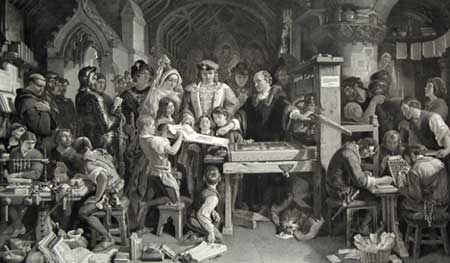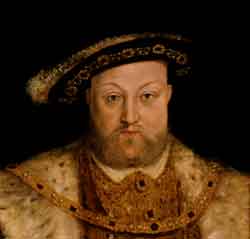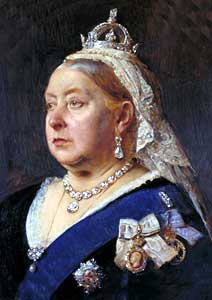|
|
| History
of The Royal Warrant |
| From
earliest times tradesmen and women have served their sovereign by
providing goods and services – from making robes and regalia to
repairing roofs and painting walls. The
first rewards for this loyal service came in the form of Royal Charters
which were granted to the trade guilds, later known as livery companies.
The earliest recorded Royal Charter was granted to the Weavers’ Company
in 1155 by Henry II. In
1394 Dick Whittington helped
obtain a Royal Charter for his own Company, the Mercers, who traded in
luxury fabrics. |
|

|
| By the
15th century Royal tradesmen were recognised by means of a
Royal Warrant of Appointment - a practice that continues to this day.
An early recipient was William Caxton,
the first English printer, who
was appointed King’s printer in 1476 after setting up his press at
Westminster. |
|
As years
passed Royal life and tastes changed. Henry VIII appointed Thomas Hewytt to ‘Serve the Court with Swannes and Cranes’
and ‘all kinds of Wildfoule’. Charles
II’s list of Royal tradesmen in 1684 included a Sword Cutter, an
Operator for the Teeth, and a Goffe-club Maker, whilst among the tradesmen
supplying the Royal Household in 1789 were a pin maker, a mole taker, a
card maker and a rat catcher. |
 |
 |
In
the late 18th century Warrant Holders began displaying the
Royal Arms on their premises and stationery.
However, it was Queen Victoria who ensured Royal Warrants gained the prestige they enjoy today.
During her 64 year reign the Queen and her family were responsible
for granting more Royal Warrants than ever before – more than 2000,
eight times as many as the Queen’s uncle, George IV.
They included companies such as Fortnum & Mason, Schweppes, and
Twinings, all of whom still hold Warrants today.
A number of women were granted Warrants including a Modeller of Wax
Flowers, a Chronometer Maker and a Silversmith. |
| |

|
| |

|
| |
Copyright
©2000 The Royal Warrant Holders Association [more]
|
|